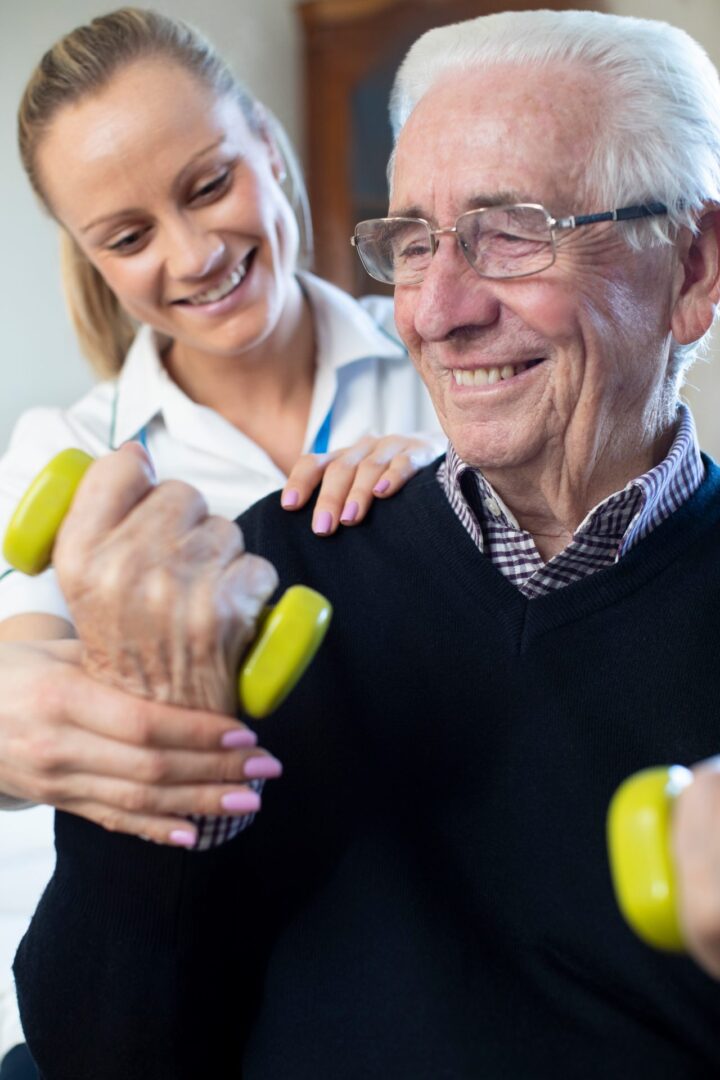Dementia is a group of conditions that affect the brain, causing problems with memory, thinking, communication, and behavior. Dementia has many forms, including Alzheimer’s disease, vascular dementia, Lewy body dementia, and more. It’s a big deal. According to the WHO, it’s the seventh leading cause of death worldwide and one of the major causes of disability among older people. While there is no cure for dementia, there are ways to manage the symptoms and improve the quality of life for people living with this condition.
Physical activity is one common recommendation. While exercise is certainly beneficial to everyone, the evidence for exercise’s effect on dementia symptoms is mixed. Most studies do show that exercise can help delay or reduce symptoms like depression, or apathy. Some studies also show a benefit in delaying or reducing cognitive declines. If you’re familiar with the benefits of exercise, this all makes sense. We know exercise has a positive effect on mood and depression. When your heart pumps harder during exercise, it increases blood flow throughout your body, including to your brain.
Does Any Type of Exercise Work?
For people with dementia, it doesn’t appear as simple as “exercise and symptoms improve.” Studies have shown that the type of exercise, duration, and frequency all make a difference. For example, one study showed that people with dementia who engaged in dance movement therapy had less depression and better physical function. A second group who performed other types of exercise at the same intensity did not see those benefits. This is where a physical therapist can be incredibly beneficial.
Physical therapy for dementia is tailored to each individual’s needs, goals, abilities, and preferences. The physical therapist will conduct a thorough evaluation of the person’s medical history, physical condition, cognitive status, functional level, and personal interests. Based on this information, the physical therapist will design a personalized treatment plan that includes specific exercises and activities that target the areas that need improvement.
The treatment plan may include:
- Aerobic exercises to improve cardiovascular health, oxygen delivery to the brain, mood, energy levels, and cognitive function.
- Strength exercises to build muscle strength and power.
- Balance exercises to challenge the person’s ability to maintain equilibrium and prevent falls.
- Functional exercises that mimic or practice daily activities that are important or meaningful to the person, such as climbing stairs, getting in and out of bed or a car, or using utensils.
- Coordination exercises or more complex movements like dance or tai chi. Evidence shows more complex movements like these have larger effects on more dementia symptoms than a simpler exercise like riding a stationary bike.
- Dual – task or cognitive exercises like combining walking with doing math out loud, or solving puzzles while on a stationary bike or treadmill. Again, research shows that combining physical and cognitive challenges can have an effect on dementia symptoms.
The physical therapist will monitor the person’s progress and adjust the treatment plan as needed. They’ll also provide feedback and encouragement. The physical therapist will also educate and advise the person and their family or caregivers on how to continue or incorporate physical activity into their daily routine and lifestyle.
Physical therapy is a safe and effective way to help people with dementia improve their physical and mental health, as well as their quality of life. Physical therapy can also provide support and guidance to people with dementia and their caregivers, helping them cope and adapt to the changes and challenges that come with this condition.
References:
- The effect of physical activity on dementia – https://pubmed.ncbi.nlm.nih.gov/31425142/
- Low & High Intensity exercise for people with dementia – https://pubmed.ncbi.nlm.nih.gov/32192537/
- Dance movement & exercise with dementia – https://pubmed.ncbi.nlm.nih.gov/30496547/
- Physical Therapy as Treatment for Cognitive Decline
- Physical Therapy for Dementia: How and Why It Helps Patients
- Exploring the Benefits of Physical Therapy for Dementia Patients
- Dementia and Physical Therapy – In Motion O.C.
- How Patients With Dementia Benefit From Physical Therapy – FOXRehab

